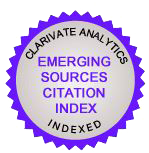Достоевский-игрок: реальность и художественный образ
Palabras clave:
The Gambler, Dostoyevsky image, biographical aspect, K. Makk, K. SzakonyiResumen
The interplay between the author and his or her work is one of the fundamental problems that literary scholarship is faced with. According to one extreme standpoint, that of the positivists, biographical data can explain the work in its entirety. At the other extreme, the formalists claim that art is the sum of a set of processes and the work is independent from the author’s life experience and the external material and intellectual environment.The events of Dostoyevsky’s life in the 1860s clearly show that biography and work have a perhaps ambiguous, but certainly close and reciprocal connection. It was a period of travels and unending gambling in the casinos when the writer had a love affair with A. Suslova and also met and later married A.G. Snitkina. All these life events show extremely close connections with Dostoyevsky’s The Gambler.
This work, written in a very short period of time and under extreme circumstances, still raises the interest of many different artists.
In Hungary, Károly Makk’s film, The Gambler, was released in 1997. This film is in part biography and part adaptation of the Dostoyevsky novel, and in its plot the two are interwoven as in a collage. Károly Szakonyi’s short piece, Vortex, which presents Dostoyevsky and Suslova’s relationship, was staged in a literary salon in Budapest in 2015.
In this study I examine the connection between Dostoyevsky’s biographical data and his novel in the two works and the Dostoyevsky image that is presented in the two Hungarian artists’ works.
Descargas
Descargas
Publicado
Cómo citar
Número
Sección
Licencia
Los autores conservan los derechos de autor sobre sus trabajos y garantizan a la revista el derecho de ser la primera publicación del mismo. Los artículos se publican bajo la licencia Creative Commons Atribución-NoComercial 4.0 Internacional (CC BY-NC-SA 4.0), lo que permite a los lectores y otros investigadores copiar, redistribuir, remezclar, transformar y construir a partir del material, siempre que se respeten las condiciones establecidas.












